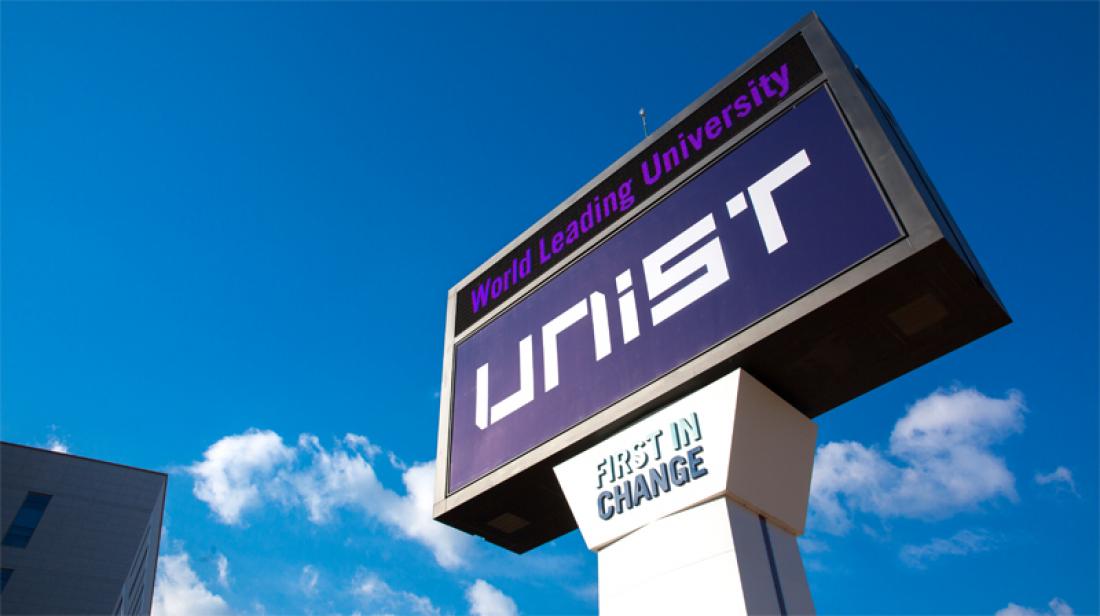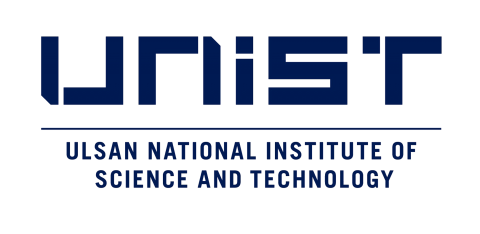
Ulsan National Institute of Science and Technology (UNIST)
Launched in 2009 with the vision of becoming a world-leading university to advance science and technology for the prosperity of humankind, UNIST embraces innovation. The world is currently in the throes of the fourth industrial revolution, in which three-dimensional printing, smart sensors, artificial intelligence and other emerging technologies are expected to disrupt established manufacturing practices. This transformation provides rich opportunities for innovation, and UNIST is actively seeking to cultivate new ideas.
In 2017, UNIST launched the Industry−Academia Battery R&D Center — probably the world’s largest university-operated R&D centre for rechargeable batteries. It is researching and developing small batteries used to power smartphones and mobile devices as well as large batteries for electric cars and energy storage devices. The centre is focusing on making batteries that are safer than the conventional lithium-ion batteries used in millions of laptops and cell phones today. Through the work being conducted at this centre, UNIST plans to develop rapid-charging, long-lasting rechargeable batteries.
UNIST recently announced the world’s first rechargeable batteries that use the sodium ions dissolved in seawater to generate electricity and can thus be safely operated in open water with little to no maintenance. These seawater batteries are being tested for powering navigational light buoys, which guide ships away from shallow or unsafe areas. They offer several economic and environmental advantages over the lead-acid batteries that are currently used for buoys.
UNIST’s success stems in part from its tremendous growth trajectory. In less than a decade, it has recruited over 300 faculty members from all over the world. The student body, which consists of about 2,500 undergraduates and 1,800 graduates, is highly international, and education at UNIST is conducted in English. Most students are scholarship recipients.
Extensive support for research is another growth driver for UNIST. For example, the campus hosts three research centres of the Institute for Basic Science (IBS). A new initiative in Korea, these research centres seek to promote excellence in basic science through the creation and support of centres that tackle important research challenges. The three centres are addressing fundamental problems in chemistry, biology and materials science, and are directed by world-renowned leaders in contemporary areas of science and technology. UNIST also provides strong support for other high-profile research centres, led by some of the world’s leading scientists, including Sang Il Seok, an expert in perovskite solar cells, and Jong Bhak, who plays a leading role in international genomic research.
The university is establishing lasting collaborations with premier institutions around the globe, including the Helmholtz Association of German Research Centers, the Max Planck Society for the Advancement of Science and the Fraunhofer Society. Through these partnerships, UNIST is actively pursuing the exchange of personnel and ideas.
These activities to enhance recruitment and collaboration are reflected in UNIST’s academic rankings. To list a few, UNIST was ranked 52nd worldwide in the 2018 CWTS Leiden Ranking in terms of the proportion of the institution’s publications assessed as being in the top 10% of the field (1st in South Korea for the second consecutive year) and 45th globally for citations in the Times Higher Education World University Rankings for 2018.
UNIST seeks to enrich of the quality of life through advances in science and technology. To this end, it has established the U-K (UNIST-Korea) research brand, which seeks to facilitate the development and commercialization of technologies expected to enrich human life in Korea and beyond. To achieve this, UNIST will constantly explore and nurture research brands that well-represent UNIST and commercialize them to create new industries, which will in turn help to create internationally competitive innovation-led growth engines. To date, UNIST has established about 14 research brands, including Energy 4.0 Seawater Batteries, Ultra-Low Power Neuromorphic Chip (UniBrain) and Organoid 3D Bioprinting. By securing the competitiveness of these specialized technologies, UNIST plans to build K-Science, the new Korean Wave of Science. The goal is to create new innovation-led growth engines and business models for the nation and beyond.
In a relatively short time, UNIST has established itself as a leader in research and education. High-technology products that were devised and developed at UNIST are beginning to find their way into the marketplace, while UNIST’s commitment to the long-term support of fundamental science is being strengthened. Students and faculty are gaining international acclaim and recognition. The steep growth trajectory of UNIST is bolstered by a dynamic framework designed for success. Like the light buoys that illuminate the sea, UNIST aims to brighten the fields of science and technology through innovation, interdisciplinarity and globalization.
UNIST was founded in 2007 in the Korean industrial capital of Ulsan, where world-renown industries in automotive, shipbuilding, petrochemical, and secondary cells are clustered. A new turning point for the growth of our university was realized this year with both the government-backed specialization plan for four science and technology universities and its decision to participate in the National Science Business Belt project.
Striving towards its goal of being ranked a Top 10 science and engineering university globally by 2030 through its focus on creativity, the convergence of scientific fields and an outstanding educational statutes and research, UNIST has already demonstrated its competitiveness in Korea, and its international recognition also is being elevated day after day.
With a strong emphasis on research, many of UNIST’s professors and their laboratories have published in the top scientific journals, including Nature, Science, and Cell. UNIST not only encourages the pursuit of scientific discovery but also the practical application of this knowledge. For instance, cathodic materials commonly found within secondary cells are now being developed here at UNIST, off-setting Korean import costs by as much as 100 million USD annually.
Furthermore, UNIST has recently established two research centers focusing on revolutionary ideas and research. The first, the Hans Scholer Stem Cell Research Center, was established jointly with the Max Planck Institute for Molecular Biomedicine. This center is striving to advance stem cell research as well as their eventual application to medical issues. The second center, the Graphene Research Center, has the 2010 Nobel Laureate in Physics, Dr. Novoselov from Manchester University in the UK, as its honorary director.
This center is investigating the nature of graphene and its derivatives on the atomic scale and exploring avenues where this “dream material” can be applied. To ensure UNIST’s standing among the best universities, UNIST boasts 100% English lectures, and is currently the only university in Korea that can make this claim. The application of foreign students from more than 30 countries is increasing year after year and the students of Michigan University, one of the top 3 state universities, have completed the year’s summer session at UNIST, which shows the synergy effect in the international interchange as well.
News
Events
Jobs
Researchers

Website
50 UNIST-gil, Ulju-gun, Ulsan, Republic of Korea, 44919

